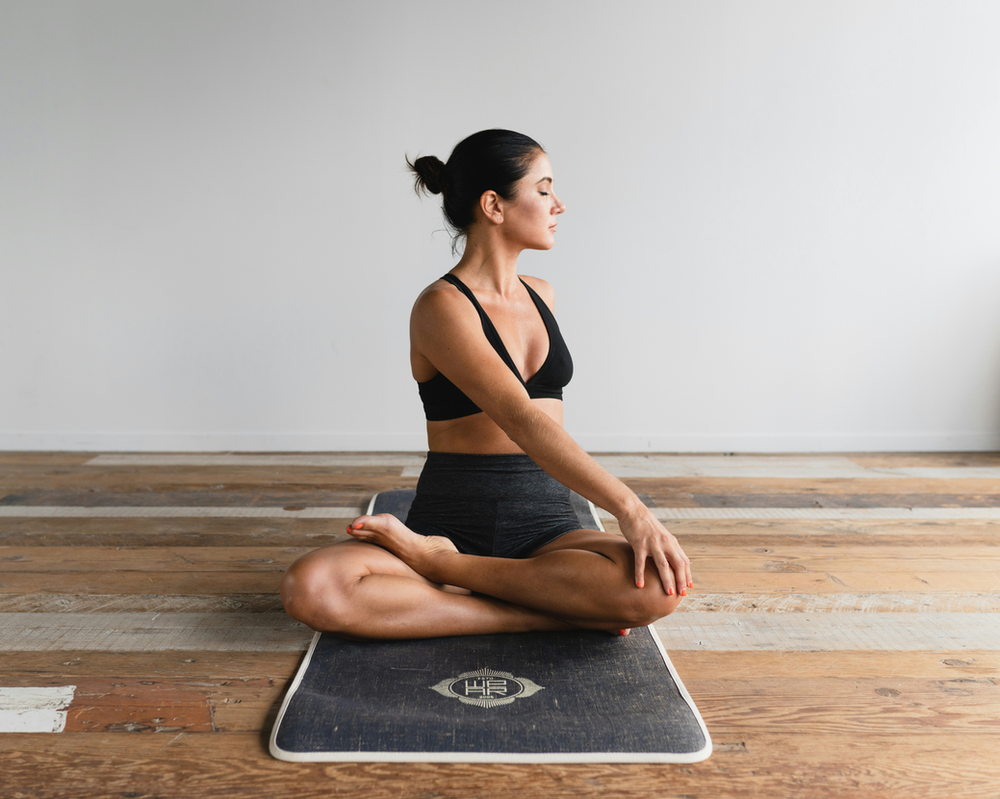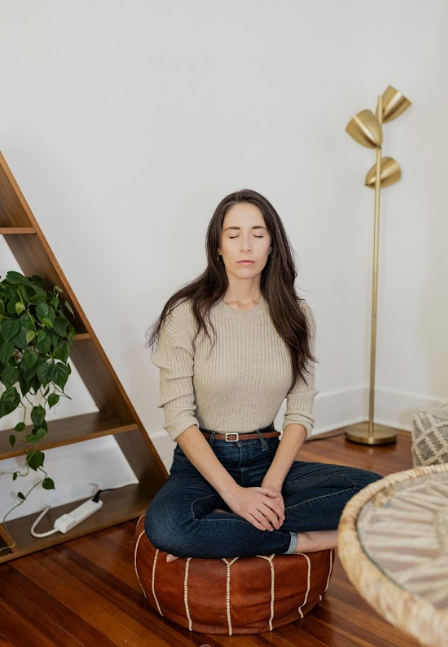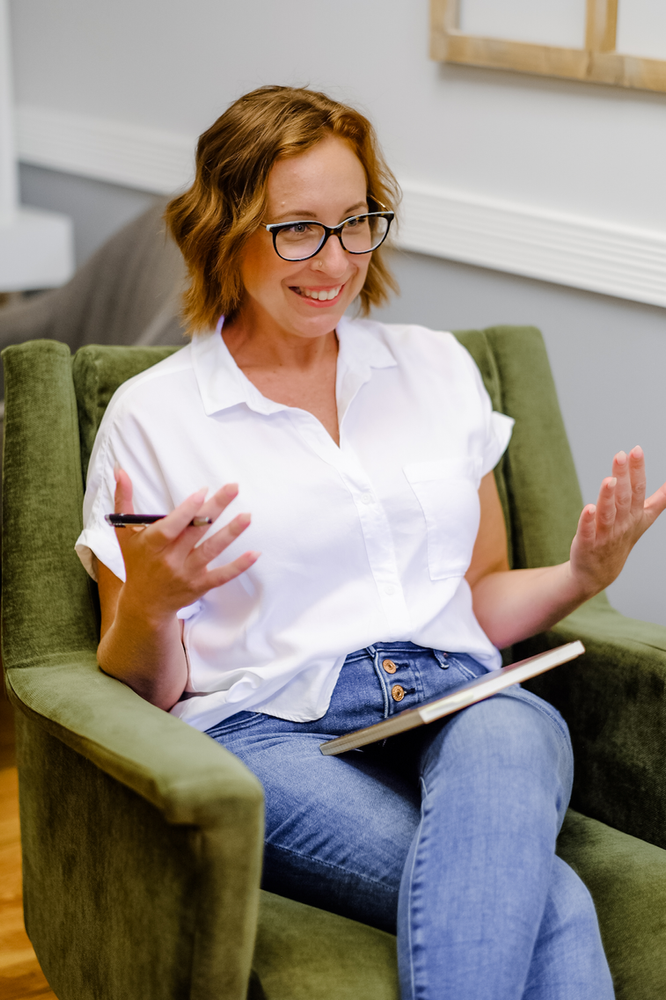Hatha Yoga, a centuries-old practice originating in ancient India, offers a holistic approach to physical and mental well-being. As one of the most widely practiced forms of yoga worldwide, Hatha Yoga focuses on integrating breath control, meditation, and physical postures to harmonize the body and mind.
In this introduction, we’ll explore the principles and benefits of Hatha Yoga, along with its origins and how it can be incorporated into modern lifestyles for enhanced health and vitality.
What are the Principles and Benefits of Hatha Yoga?
Principals
The principles of Hatha Yoga revolve around achieving balance and harmony within the body, mind, and spirit. Some key principles include:
Asana (Physical Postures): Hatha Yoga emphasizes the practice of physical postures or asanas to stretch, strengthen, and balance the body. These postures are designed to improve flexibility, enhance circulation, and promote overall physical well-being.
Pranayama (Breath Control): Breath control techniques, known as pranayama, play a crucial role in Hatha Yoga practice. Practitioners learn to regulate their breath to calm the mind, increase energy levels, and enhance mental clarity.
Relaxation and Meditation: Hatha Yoga incorporates relaxation and meditation techniques to quiet the mind, reduce stress, and cultivate inner peace. These practices help to improve concentration, promote emotional stability, and deepen self-awareness.
Balance and Alignment: Hatha Yoga focuses on achieving balance and alignment in both the physical body and the mind. Through mindful movement and conscious awareness, practitioners learn to find equilibrium and harmony in their practice and daily lives.
Mindfulness and Presence: Mindfulness is a core principle of Hatha Yoga, emphasizing present moment awareness and conscious living. Practitioners learn to cultivate mindfulness through their yoga practice, bringing greater awareness to their thoughts, feelings, and sensations.
Overall, the principles of Hatha Yoga encourage practitioners to cultivate a holistic approach to health and well-being, integrating physical, mental, and spiritual elements to create harmony and balance in life.
Benefits
One of the primary benefits of Hatha Yoga is improved physical health. Regular practice can enhance flexibility, strength, and posture, while also promoting better circulation and cardiovascular health. Additionally, the focus on controlled breathing can help reduce stress, anxiety, and tension, leading to a calmer and more balanced state of mind.
Hatha Yoga also offers numerous mental and emotional benefits. It provides a space for self-reflection and introspection, allowing practitioners to develop greater self-awareness and mindfulness. The practice of mindfulness in Hatha Yoga can help alleviate symptoms of depression and anxiety, improve concentration and focus, and promote overall mental well-being.
Moreover, Hatha Yoga encourages a deeper connection with oneself and with others, fostering a sense of community and support among practitioners. It offers a pathway to inner peace, self-acceptance, and spiritual growth, ultimately leading to a more fulfilling and meaningful life.
The History of Hatha Yoga
Hatha Yoga traces its origins back to ancient India, with its roots firmly planted in the rich tapestry of yogic tradition. The term “Hatha” is derived from the Sanskrit words “ha” (sun) and “tha” (moon), symbolizing the union of opposing energies within the body.
While the exact origins of Hatha Yoga are shrouded in the mists of time, it is believed to have emerged as a distinct yogic tradition around the 9th or 10th century CE. Its development is often attributed to legendary figures such as Goraksha Natha and Matsyendranath, who are revered as pioneers of Hatha Yoga.
Hatha Yoga was originally codified in ancient texts known as the Hatha Yoga Pradipika and the Gheranda Samhita, which provided detailed instructions on physical postures (asanas), breathing techniques (pranayama), cleansing practices (kriyas), and meditation methods. These texts laid the foundation for the systematic practice of Hatha Yoga, emphasizing the cultivation of physical health, mental clarity, and spiritual awakening
Over the centuries, Hatha Yoga evolved and diversified, incorporating influences from various yogic lineages and cultural traditions. Today, it remains one of the most widely practiced forms of yoga worldwide, cherished for its ability to promote physical vitality, mental serenity, and spiritual awakening.
Dive deeper into the History of Hatha Yoga Here!
What Does Hatha Yoga Look Like?
For beginners, Hatha Yoga typically involves a series of gentle and accessible physical postures (asanas) that are practiced in conjunction with controlled breathing techniques (pranayama) and meditation. A typical Hatha Yoga session may include the following components:
Centering: The practice often begins with a few moments of centering, where practitioners focus their attention inward, connect with their breath, and set an intention for their practice.
Warm-up: Gentle warm-up exercises, such as neck rolls, shoulder shrugs, and spinal movements, help prepare the body for the more active postures to come.
Asanas: Hatha Yoga sequences typically include a variety of asanas, ranging from standing poses, seated poses, forward bends, backbends, twists, and inversions. Each posture is held for a few breaths, allowing practitioners to deepen their awareness, stretch their muscles, and build strength and flexibility.
Pranayama: Throughout the practice, practitioners engage in conscious breathing techniques, such as deep belly breathing, alternate nostril breathing, or breath retention. Pranayama helps regulate the breath, calm the mind, and enhance the flow of energy throughout the body.
Meditation and Relaxation: The practice often concludes with a period of meditation or guided relaxation, allowing practitioners to cultivate mindfulness, inner peace, and a sense of deep relaxation.
Hatha Yoga is typically practiced in a quiet and peaceful environment, with minimal distractions. It is important for beginners to listen to their bodies, move mindfully, and honor their limitations. Props such as yoga blocks, straps, and bolsters may be used to support and modify the postures as needed. With consistent practice, beginners can gradually build strength, flexibility, and inner awareness, experiencing the numerous benefits of Hatha Yoga for both body and mind.
Understanding the Differences Between Hatha and Vinyasa Yoga
Hatha and Vinyasa yoga are two popular styles that often get confused due to their shared focus on physical postures and breath work. However, they have distinct characteristics.
Hatha yoga is typically slower-paced and emphasizes holding poses for longer periods to enhance alignment and build strength. It’s great for beginners as it provides a foundational understanding of various asanas (poses).
Vinyasa yoga, on the other hand, is dynamic and flow-based, linking breath with movement in a continuous sequence. This style often includes more vigorous transitions between poses, promoting cardiovascular fitness and flexibility.
The confusion arises because both styles incorporate similar poses and breathing techniques, but their pacing and flow differentiate them. Understanding these differences can help practitioners choose the style that best suits their fitness goals and personal preferences.
How to Practice Hatha Yoga as a Beginner
Starting a Hatha Yoga practice as a beginner can be an enriching journey towards physical and mental well-being. Here are some steps to help you get started:
Find a Suitable Class: Look for beginner-friendly Hatha Yoga classes at local yoga studios, community centers, or online platforms. Choose a class that fits your schedule and preferences, and consider seeking guidance from certified yoga instructors who can provide proper instruction and support.
Gather Essential Equipment: You’ll need a few basic yoga props to support your practice, including a yoga mat, comfortable clothing that allows for easy movement, and any optional props such as yoga blocks, straps, or blankets.
Set Realistic Goals: Approach your practice with an open mind and a spirit of curiosity. Set realistic goals based on your current fitness level and flexibility, and be patient with yourself as you progress.
Start Slowly: Begin with simple and gentle poses that focus on building strength, flexibility, and body awareness. Pay attention to your breath and listen to your body’s cues, avoiding any movements or postures that cause discomfort or strain.
Practice Regularly: Consistency is key to developing a strong and sustainable yoga practice. Aim to practice Hatha Yoga regularly, even if it’s just for a few minutes each day. As you build strength, flexibility, and confidence, gradually increase the duration and intensity of your practice.
Seek Guidance: Don’t hesitate to ask questions or seek guidance from experienced yoga teachers or fellow practitioners. They can offer valuable insights, modifications, and encouragement to support your journey.
Embrace Mindfulness: Cultivate a sense of mindfulness and presence during your practice, focusing on the sensations in your body, the rhythm of your breath, and the thoughts and emotions that arise. Allow yourself to be fully present in each moment, without judgment or expectation.
Be Kind to Yourself: Remember that yoga is a personal journey, and there is no right or wrong way to practice. Be kind and compassionate towards yourself, celebrate your progress, and honor your body’s needs and limitations.
By following these steps and embracing the principles of Hatha Yoga, you can embark on a transformative journey towards greater health, vitality, and inner peace.
Start your Yoga Journey at Be Your Best Self & Thrive Therapy
At Be Your Best Self & Thrive Therapy, we deeply value the holistic approach to mental health and wellness, recognizing the numerous benefits that practices like yoga can offer. Our staff is committed to supporting individuals on their journey towards greater well-being, incorporating yoga and mindfulness into our therapeutic offerings.
Rochelle Young, one of our therapists currently accepting new clients, understands the importance of holistic approaches to mental and emotional health. With a person-centered approach, Rochelle seeks to meet you where you are on your mental health journey, offering mindful guidance and support tailored to your unique needs and preferences. Whether you are exploring new wellness practices or seeking to improve your overall mental health, Rochelle is here to help you find a path that feels right for you.
If you are interested in scheduling a free 15-minute consultation with Rochelle Young, Get Started Now!
In addition, Nicole Malene, a registered yoga instructor, will be accepting new clients in Fall 2024 and is passionate about integrating yoga into her therapeutic sessions for those who desire it. With her expertise in yoga psychology, Nicole understands the profound connection between body, mind, and spirit, using yoga as a tool to promote healing, self-discovery, and personal growth.
Lastly, our owner, Jamie Molnar, who is currently on a waitlist, specializes in yoga psychology. While her yoga training informs her therapeutic approach, Jamie recognizes that yoga may not be for everyone, and she respects each client’s unique preferences and needs. However, she is dedicated to spreading awareness about the healing benefits of yoga, including Hatha Yoga, and strives to empower individuals to explore its potential as a complement to their mental health journey.
Additionally, Jamie extends her expertise at Be Your Best Self & Thrive Therapy by offering comprehensive training for clinicians interested in integrating yoga and meditation practices into their counseling sessions. Drawing from her deep understanding of yoga psychology, Jamie provides valuable insights into the healing potential of yoga, empowering clinicians to enhance their therapeutic approach. Also, Jamie provides support through supervision and consultation services, ensuring that clinicians feel equipped and confident in their practice as they navigate the intersection of yoga and mental health.
Are you interested in learning more about Jamie’s training and/or her supervision and consultation services? Get started here!
At Be Your Best Self & Thrive Therapy, we believe in the power of yoga to nourish the body, mind, and soul, and we are here to support you every step of the way on your path to wellness.
Final Thoughts with the BYBS Content Creator
As we embrace the healing journey at Be Your Best Self & Thrive Therapy, the integration of yoga into our practice underscores our commitment to holistic well-being. Through the compassionate guidance of therapists like Rochelle Young and Nicole Malene, we offer a supportive environment for individuals to explore the transformative power of yoga in their mental health journey. With a deep appreciation for the mind-body connection, we strive to empower our clients to find balance, healing, and inner peace through the practice of yoga, fostering holistic growth and self-discovery.
Let’s all take some time to stretch, breathe, and thrive.
Alayna Dorfman






